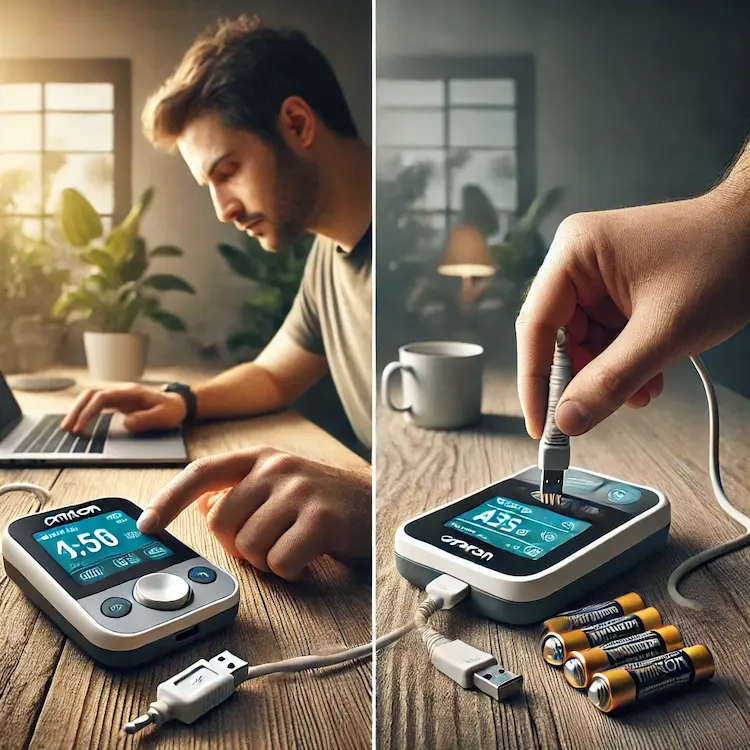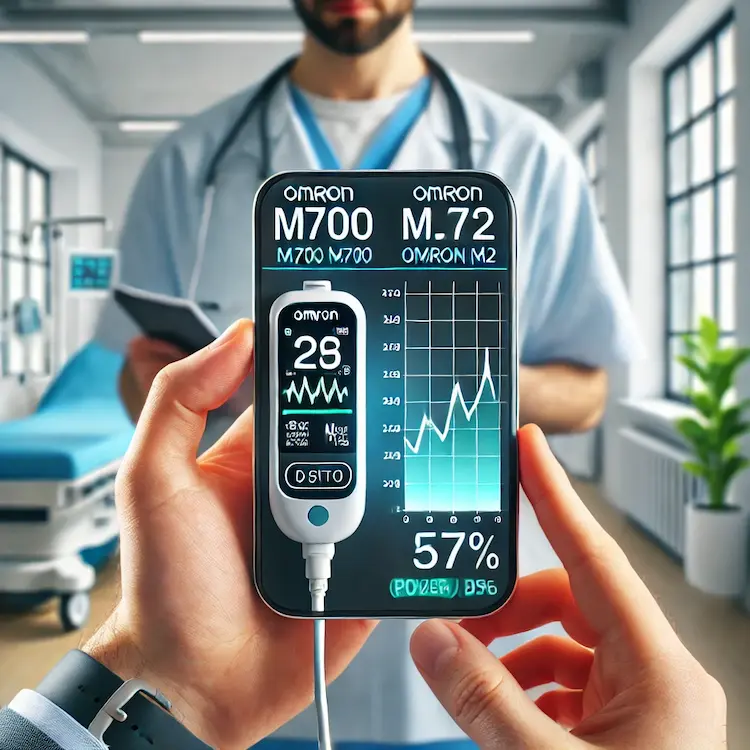Blood pressure monitoring is crucial for individuals managing hypertension, cardiovascular diseases, or those requiring continuous health tracking. Omron, a leading brand in digital blood pressure monitors, offers a range of devices catering to different needs. Two popular models—Omron M700 vs. Omron M2—are often compared for their reliability, ease of use, and battery performance.
For users needing continuous monitoring, battery life is a key factor in determining which device is more efficient. This article provides a detailed comparison of Omron M700 vs. Omron M2, focusing specifically on their battery performance, power efficiency, and usability in real-world scenarios. By understanding their distinctions, consumers can make an informed choice for better health management.
Why Battery Life Matters in Blood Pressure Monitors
Battery performance in a blood pressure monitor impacts its usability, especially for individuals who:
- Need frequent or continuous blood pressure checks throughout the day.
- Use the device in clinical or home settings where reliable power is essential.
- Travel often and require a long-lasting device to avoid frequent battery replacements.
- Rely on the monitor as part of their daily health tracking, particularly for conditions like hypertension or arrhythmia.
Longer battery life ensures:
- Lower maintenance costs (fewer battery replacements).
- More reliability in remote locations or emergencies.
- Increased convenience for daily users.

Comparison Overview: Omron M700 vs. Omron M2
Below is a side-by-side comparison of the two models, with a specific focus on battery performance.
| Feature |
Omron M700 |
Omron M2 |
| Battery Type |
4 x AA batteries |
4 x AA batteries |
| Battery Life (Average Usage) |
Up to 1,000 measurements |
Up to 300 measurements |
| Power-Saving Mode |
Yes |
No |
| USB Adapter Support |
Yes (optional) |
No |
| Auto Shut-Off |
Yes |
No |
| Frequency of Battery Replacement |
Less frequent (lasts ~1 year with moderate use) |
More frequent (~4 months with moderate use) |
| Cost of Replacement Batteries (Annually) |
Lower |
Higher |
Battery Life: Technical Breakdown
Battery Type and Efficiency
Both the Omron M700 and M2 use 4 AA batteries, but their efficiency differs:
- Omron M700 has an advanced power management system, consuming less energy per measurement.
- Omron M2, while reliable, lacks power-saving features, leading to faster battery drain.
Power Consumption Per Use
- Omron M700 is designed for high-usage scenarios. A single set of AA batteries can last up to 1,000 readings.
- Omron M2 offers an estimated 300 readings per battery set, making it less efficient for frequent monitoring.
Auto Shut-Off & Power-Saving Mode
- Omron M700 automatically powers down after inactivity, reducing unnecessary battery usage.
- Omron M2 does not have an automatic shut-off function, causing batteries to drain faster if left on accidentally.
USB Adapter Option
- Omron M700 supports an external USB power adapter, allowing users to bypass battery use when near a power source.
- Omron M2 runs only on batteries, making it dependent on frequent replacements.
Practical Implications of Battery Life
For Home Users
- If you monitor blood pressure multiple times a day, the Omron M700 is a better choice due to its extended battery life and power-saving features.
- Omron M2 is ideal for users who take readings less frequently (1-2 times a day).
For Travelers
- Omron M700’s USB adapter makes it ideal for travel, as you can plug it in when needed.
- Omron M2, with no USB option, requires spare batteries when traveling.
For Clinicians & Caregivers
- In a clinical setting where devices are used multiple times daily, the M700’s long-lasting battery is more practical.
- Omron M2 may need frequent battery changes, which could be inconvenient in busy environments.
Cost Considerations: Battery Expenses Over Time
The cost of replacement batteries can add up over time. Assuming AA batteries cost $0.80 each, here’s a breakdown of annual costs:
| Usage Level |
Omron M700 (1,000 Readings per Set) |
Omron M2 (300 Readings per Set) |
| Light (1-2 readings/day) |
$3.20/year |
$9.60/year |
| Moderate (3-4 readings/day) |
$6.40/year |
$19.20/year |
| Heavy (5+ readings/day) |
$9.60/year |
$28.80/year |
The Omron M700 significantly reduces long-term battery expenses, making it the more cost-effective option for continuous monitoring.
Alternative Power Solutions
If you want to extend battery life further, consider:
- Rechargeable AA Batteries: Useful for both models, though frequent charging may be needed for the Omron M2.
- Omron M700’s USB Adapter: Eliminates battery concerns when used near a power source.
- Hybrid Power Banks: Some users connect the M700’s USB adapter to a portable power bank for added flexibility.

Conclusion
The Omron M700 is the superior choice for those requiring extended battery life and continuous monitoring. It outperforms the Omron M2 in energy efficiency, power-saving features, and battery longevity. While the Omron M2 remains a solid option for occasional users, its shorter battery life and lack of power-saving options make it less practical for frequent monitoring.
If battery life and cost efficiency are priorities, the Omron M700 is the clear winner.
Key Takeaways
- Omron M700 lasts 3x longer per battery set compared to Omron M2.
- M700 supports USB power, reducing battery dependency.
- M700 has power-saving features, including auto shut-off.
- M2 is cheaper upfront but costs more in battery replacements over time.
- Frequent users (3+ readings/day) should opt for Omron M700.
Actionable Recommendations
- Choose Omron M700 if you need frequent monitoring—it reduces battery changes and saves money.
- Invest in a USB adapter for Omron M700 to extend its usability without relying on batteries.
- Use rechargeable AA batteries if choosing the Omron M2 to mitigate high battery replacement costs.
- For travelers, the Omron M700’s USB power feature makes it more convenient.
- If budget-conscious, consider the total cost of ownership—Omron M2 is cheaper initially but more expensive in battery expenses over time.

